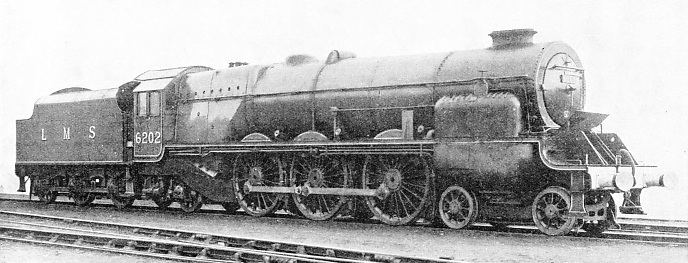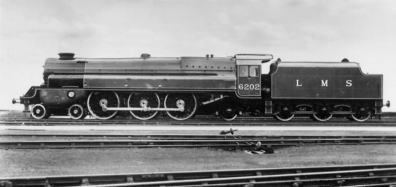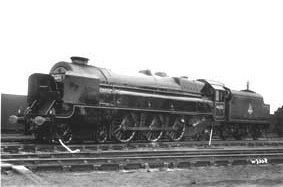Designer William Stanier Build date 1935 UIC class 2′C1′ turb.h | Builder LMS Crewe Works Configuration 4-6-2 Pacific | |
 | ||
Power type Steam Turbine-mechanical | ||
Tri ang lms turbomotive
The Turbomotive was a modified Princess Royal Class steam locomotive designed by William Stanier and built by the London, Midland and Scottish Railway in 1935. It used turbines instead of cylinders. It was later rebuilt as a conventional locomotive 46202 Princess Anne.
Contents

The forward turbine had 18 rows of blading. Output was 2,400 hp (1,800 kW) at 7060 rpm, corresponding to running at 62 mph (100 km/h). Boiler pressure was 250 psi (1.7 MPa). The turbine was designed to operate into a maximum back-pressure of 2 psi (14 kPa), allowing a conventional double blast-pipe to provide the boiler draught, and eliminating draught fans, which always seemed to give a disproportionate amount of trouble.

The reverse turbine had 4 rows of blades. It was engaged by a dog clutch, activated when the reverser lever was set to "0". This was originally steam-operated by a small piston and cylinder.

Compared to some other experimental steam locomotives of the era such as the LNER Class W1, Turbomotive was relatively successful, showing a saving of coal compared to a normal reciprocating engine and no hammer blow on the track. Because steam turbines are highly inefficient when throttled (not a problem on steamships, where turbines typically run at constant output, but a major disadvantage for a railway locomotive which has to run at different speeds), power was instead controlled by turning on a different number of nozzles (from the six available) through which steam was admitted to the turbine. One disadvantage of the design was that the small reverse turbine only had sufficient power for manoeuvring "light engine" and the locomotive always had to be turned to face forwards in order to pull a train.

When a turbine failure occurred in 1949 it was considered uneconomic to repair during post-war austerity measures, so the locomotive was taken out of service pending a rebuild.

Lms turbomotive 6202
46202 Princess Anne

46202 was rebuilt as a conventional locomotive in 1952, using new mainframes and a set of cylinders of the same type as used in the "Coronation" class, and named Princess Anne. On 8 October 1952, after only two months in service, it was the train engine of the double-headed Liverpool and Manchester express involved in the Harrow and Wealdstone railway accident. The locomotive was taken to Crewe, where it was deemed beyond economical repair and scrapped. The destruction of No. 46202 led to the construction of BR Standard Class 8 number 71000, Duke of Gloucester.
